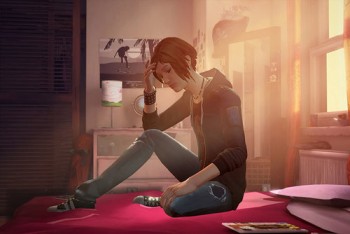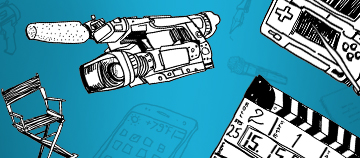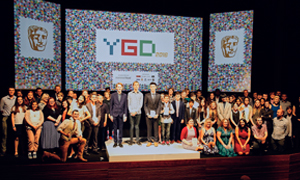
Chris Floyd, Co-Game Director, Deck Nine Games discusses the inspiration and process behind the game.
What sparked the idea for Life is Strange: Before the Storm and how did it change over time?
As the follow-up prequel to Life is Strange, our greatest inspiration was the character of Chloe herself—who she was in the first game, her backstory of grief and abandonment, and the friendships she makes. Examining how someone, in their most vulnerable teenage years, experiences everyday pain like a parent dying and the other parent starting to date again—that felt like a story worth telling. By embracing the character of Chloe, we were testing a hypothesis: We knew that the way Life is Strange had portrayed real-world, relatable problems was compelling. But Chloe wouldn’t have any supernatural powers like Max had in Life is Strange. Could the everyday be not just part of the game, but the heart of it? Our intuition at the start of the project was that it could, and the response of players has borne that out. What we discovered as we developed the story was that Chloe didn’t have to be just a broken, tragic character. We also learned to affirm her strength and resilience. This came from looking at her through the eyes of Rachel Amber, who Chloe describes as an “angel” that gave her life new purpose. The unique chemistry of these two girls’ relationship generated the kind of moments we wanted in our story, moments that took Chloe from despair to a place of learning to live with her grief.
Who is the game targeted at?
Our primary audience were those who loved the first Life Is Strange, which sounds obvious and easy, but we had to ask ourselves: “Why did Life Is Strange strike such a chord? And with whom?” One answer is that these games are speaking to an audience that is frequently— almost entirely —underrepresented in mainstream video games. Not only are young women or gay characters rarely present in our medium, but when they are, it isn’t often their day-to-day lives and relationships that are the subject. Many underserved players can see themselves in Before the Storm. We also saw our game as an opportunity to shed some light on the nature and meaning of grieving. Chloe loses her father to a car accident and her only real friend to the vicissitudes of adults. By the end of our story, those people don’t magically return to her. But she does find a way to navigate those losses and become capable of caring for herself and for the world again.
Why did you feel this game was important to make?
One motivation for us was to create an experience of empathy for a character who might typically be tokenized or dismissed. On the surface, Chloe is just another angry, rebellious teen. By letting the player inhabit her and see the world through her eyes, we hoped to show that she is easily misunderstood, and that all of us both want and deserve love and connection. Before the Storm was also an opportunity to contribute to the broadening of video games’ vocabulary. Because we were diving deep into the everyday lives of adolescent girls in our own world, many of our scenes were unique experiences for players: Here’s a scene where you’re on-stage in a high school play and you don’t know your lines. Here you’re playing a bitter, heartbroken girl smashing things in a junkyard with a baseball bat. Later, you’re meeting your new friend’s parents for the first time and awkwardly helping set the table. These are all not just story points, but interactive scenes, each with gameplay that connects to an emotional artery the story has established. This is more than feeling a feeling, it is playing a feeling, and the result is you relate to this strange teenage girl because you’ve really been in her shoes. You haven’t just watched her, you’ve performed her in moments of real and intense emotion.
What research or collaborations did you undertake to inform the game?
A major topic of research was grief and mourning, to help us understand both Chloe’s psychological starting point in the story, and what the process of learning to cope with grief can look like. Our writers referenced memoirs like Joan Didion’s The Year of Magical Thinking, C.S. Lewis’ A Grief Observed, The Long Goodbye by Meghan O’Rourke, and Roland Barthes’ Mourning Diary, as well as clinical works like Elizabeth Kübler-Ross’ On Death and Dying. On top of that, we did wide-ranging research on other topics that came up in our story, including the experience of homelessness, single-parenthood, parental custody and adoption, stalker behaviour, and drug use among teenagers.





